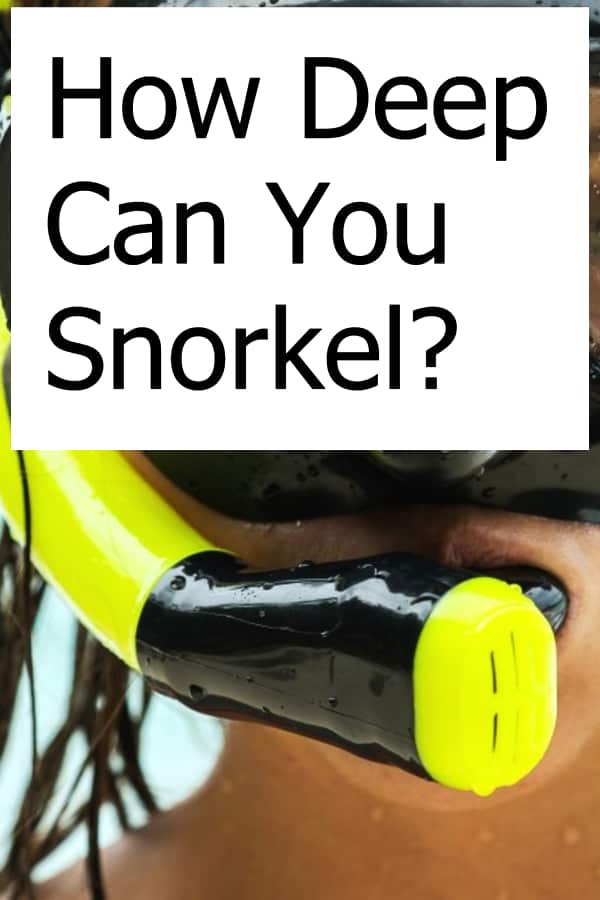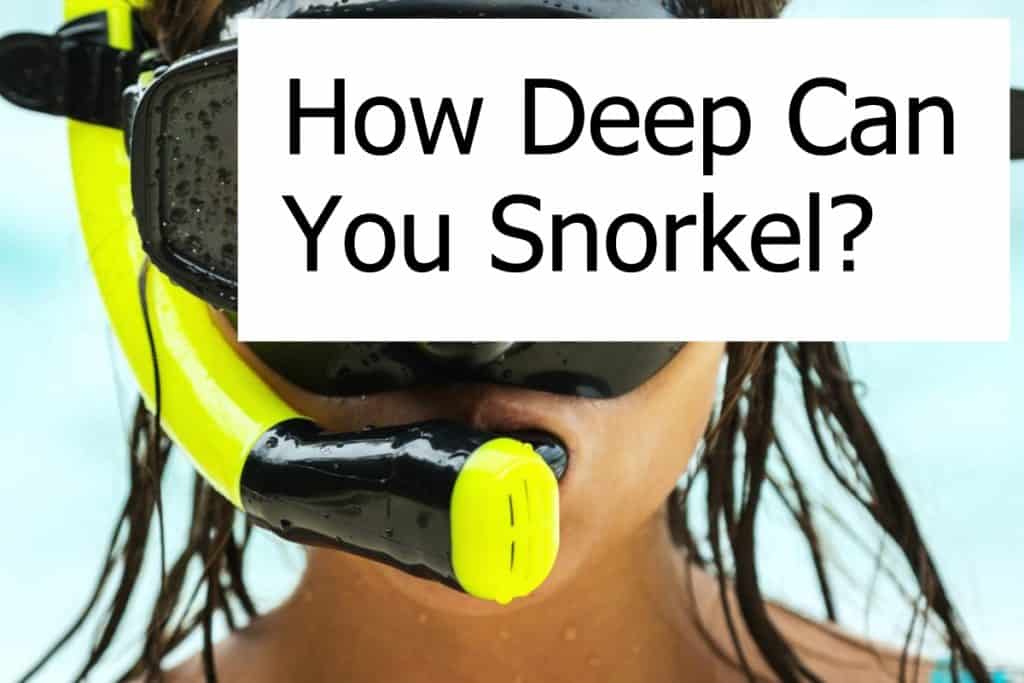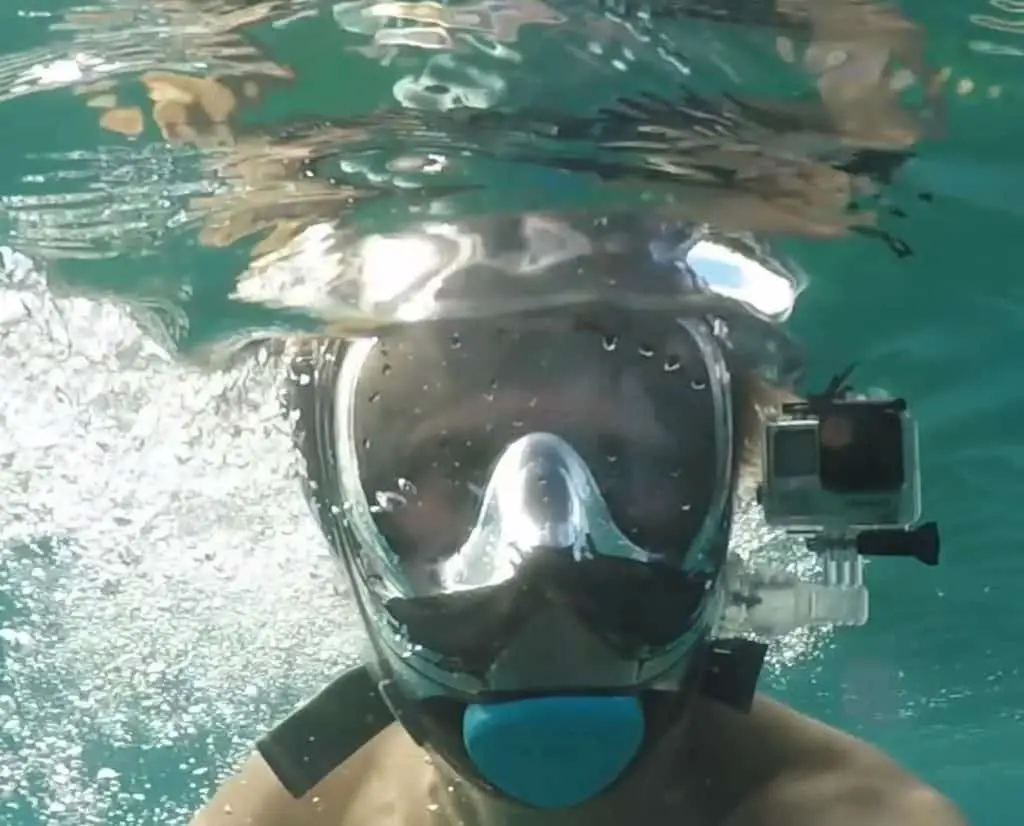How Deep Can You Snorkel? – Underwater Snorkeling Guide
Snorkeling is a great way of getting a glimpse of what happens under the water surface and what life in the ocean is like. Getting to swim with the fish and exploring their world is what snorkelers live for.
Yet, sometimes you see something just out of reach and you might wonder on how deep can you snorkel with no dive gear?
Is it as easy as taking a deep breath of fresh air and then down you go? Let’s have a look!
Unlike scuba diving, snorkeling does not involve going deep into the water. There may be some snorkelers who opt to dive underwater but this is not the norm. Snorkeling also results in not being able to breathe while you’re underwater as you have no breathing apparatus as you do when you’re scuba diving. When you’re diving with air then you can dive deeper as the pressurized air allows you to breathe underwater.
You may wish to go deeper if you spot something fascinating, whether it’s a fish or some other brightly colored object that you want to take a closer look at. How deep you can go into the water varies from person to person based on your swimming and diving skills.
Without the proper scuba equipment, you may run the risk of applying too much water pressure on your lungs and sustaining serious injuries. Yet, to be clear, it’s nearly impossible to dive to depths that could be dangerous without a scuba tank.
Let’s take a closer look at how deep you can go with basic snorkeling equipment and answer the question of how deep you can snorkel.
The Dangers Involved
The major risk is that of compressing your lungs. You may not even be aware of how much pressure your lungs are under till it is too late and you lose consciousness underwater.
After a depth of 1 meter has been crossed, your snorkel mask will start getting compressed against your face due to water pressure. This is just a little over 3 feet and you reach that level of compression This will not only be uncomfortable, it can also cause facial injuries.
The snorkel mask allows you to breathe through the tube connected to it. The opening of the tube is above the water to allow you to dispel carbon dioxide and take in fresh air. The tubes may be of different lengths but they’re obviously not going to allow you to go too deep in the water.
Holding your Breath when you Snorkel down
The main way for you to underwater snorkel deeper under the water is by holding your breath. However, this can be a bit tricky. The key is to listen to your body.
If you experience any discomfort such as dizziness, suffocation, cramps, nausea, or light-headedness, then immediately make your way back to the surface. Without proper scuba diving gear, this threshold will be very small, around 1 meter or 3 feet, or maybe a bit more depending on your physical strength and the amount of time you can hold your breath for.
That’s also the reason why snorkels are pretty short. If you dive deeper then the surrounding pressure makes it impossible to breathe without pressurized air. A longer snorkel than the standard 12 to 15 inches doesn’t make sense as your lungs couldn’t breathe anyway.
Why can Divers Breathe Underwater?
Scuba divers can breathe at deeper depths as they use compressed air or gas mixes. The air in the tank has higher pressure compared to the surrounding water pressure. That’s why you can breathe underwater with scuba equipment but not with a snorkel! The breathing gas is practically forced into your lungs.
If you want to find out how deep can you dive with scuba gear then check out our article on that: https://www.deepbluediving.org/maximum-depth-with-gear/!
Going Underwater with a Snorkel Tube
We’ll start off with some basic scientific facts:
- On average, your lungs can operate against a pressure of 0.05 atm or less.
- For every 10 meters deep that you go in the water, the water pressure goes up by 1 atm.
Pressure on your Body and Lungs when you Snorkel Underwater
This means that the deeper you go, the more trouble your lungs will have expanding underwater. Your snorkel tube will not be of much use at this point. This is because most snorkel tubes are very short – their sole purpose is to allow you to dip your face in the water and observe the fish and the coral reefs.
You can still dive in and snorkel down, but you’ll have to hold your breath. Just don’t try breathing through your snorkel tube when you’re deep in the water.
Stale Air in a long Snorkel Tube
You’d also experience that a long snorkel would collect stale air as you can’t produce enough force to push the stale air completely out of the snorkel when you breathe out. That stale air would end up getting enriched with CO2 which would eventually become dangerous.
So ultimately, the question arises as to why you can’t just use a longer snorkel tube. Essentially, even with a longer tube, if you’re deep in the water, say around 10 meters, you’d still have to deal with a pressure difference of 1 atm. You will be able to breathe out, but you can’t breathe in as your lungs can’t overcome the surrounding pressure – which is kind of like not eating but constantly having to go to the bathroom.
Your best bet is to get 12-15 inch snorkel tube and hold your breath as you sink in, but ideally, if you want to explore the waters underneath, try getting a scuba certification and start diving. An average depth of around less than 3 feet / 1 meter is considered to be the norm for snorkelers.
The Bends when you Snorkel Deep
The bends are just another name for decompression sickness. Decompression sickness causes joint pains and can also affect your lungs, heart, and brain. It is the result of gas bubbles building up in your body due to rising water pressure and is generally a phenomenon that occurs when you’re very deep under the surface when scuba diving where the water pressure is at its peak.
Can you get Decompression Sickness in Shallow Water?
However, it is possible to get the bends in shallow water as well. Research indicates that even going to a depth of 3 meters is sufficient to cause the bends if you stay underwater for long time periods (half an hour or more).
The buildup of gas bubbles is relatively smaller but can still be painful. As you are not able to stay underwater for such a long time when snorkeling you are practically not at any risk of contracting the bends.
You’d have to be diving or capable of holding your breath for a really, really long time… You’ll find out that that’s pretty much impossible when you snorkel.
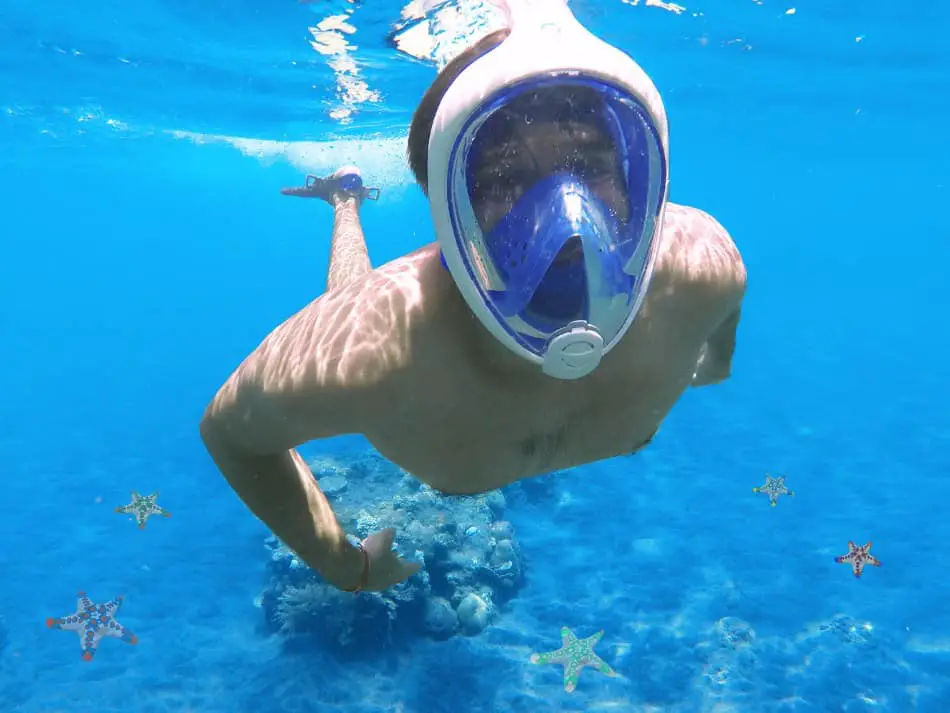
A Guide to Snorkel Diving
Now just because you can’t go as deep in the water as when you scuba dive, it doesn’t mean you can’t dive in at all when you snorkel.
Know Your Strengths
Every person has a different level to which they can hold their breath underwater, but you can train breath-holding to be able to increase the time periods.
- Time yourself to see how long you can stay underwater while holding your breath. Try to stay for a few more second the next time, but remember not to overburden your lungs. Your first dive probably won’t last very long and you’ll return to the surface almost immediately. With time and practice, your body will start getting somewhat accustomed to the water pressure and you’ll be able to stay in for a longer amount of time.
- Learn how to store a little extra oxygen in your body. Before holding your breath, take 5 short breaths which will get some oxygen pumping through your bloodstream. Repeat this, and you will notice that you can hold your breath for a longer period of time now. Remember not to overdo it. If you take up too much carbon dioxide, you’ll start feeling dizzy and you may pass out.
Have a Snorkel Buddy to be Safe when Underwater Snorkeling
It is absolutely crucial that when you try out these experiments, you have a snorkel buddy with you. Any mishaps when you’re alone while you snorkel and perform these breath-holding exercises could be detrimental to your life.
There may come a point where your body suddenly feels drained and exhausted. This is when your oxygen supply has run out. Avoid reaching this stage because resurfacing will be difficult and you will be at risk of passing out.
Also, keep your heart rate in check. Anyone with a heart rate of 110 or more is not fit to hold their breath underwater.
Get Fit
If you truly want to be a snorkel diver and do some underwater snorkeling, you have to push yourself. There may be times when holding your breath might feel uncomfortable, but as long as this discomfort isn’t immense, keep on moving if you want to truly explore the beauty of the ocean.
The more fit your body is, the better it will work at pumping oxygen throughout your system. This will also allow for anaerobic combustion which will allow your body to perform well, even when you’re holding your breath when you snorkel dive.
Keeping Your Gear Clean
Having your snorkeling gear in top shape can also assist you during your snorkel dive. Every time you go underwater, your snorkel fills up with water. You can eliminate this by blowing on it to remove the excess droplets, or, when you’re rising to the surface, blow out and the water will squeeze right out. You can also get a dry snorkel which will keep the water out of the tube.
Water that has collected in your snorkel mask can cause irritation to your eyes and nose. One way is to look up, gently pull at the snorkel mask so it’s no longer sealed on your face, and all the water to flush out.
Alternatively, look up and let all the water to accumulate around your cheeks and blow into the snorkel goggles to dispel the water. You might feel the urge to look down. Don’t do it! This trick will take some time getting used to, but it’s very useful if you’re a frequent snorkeler.
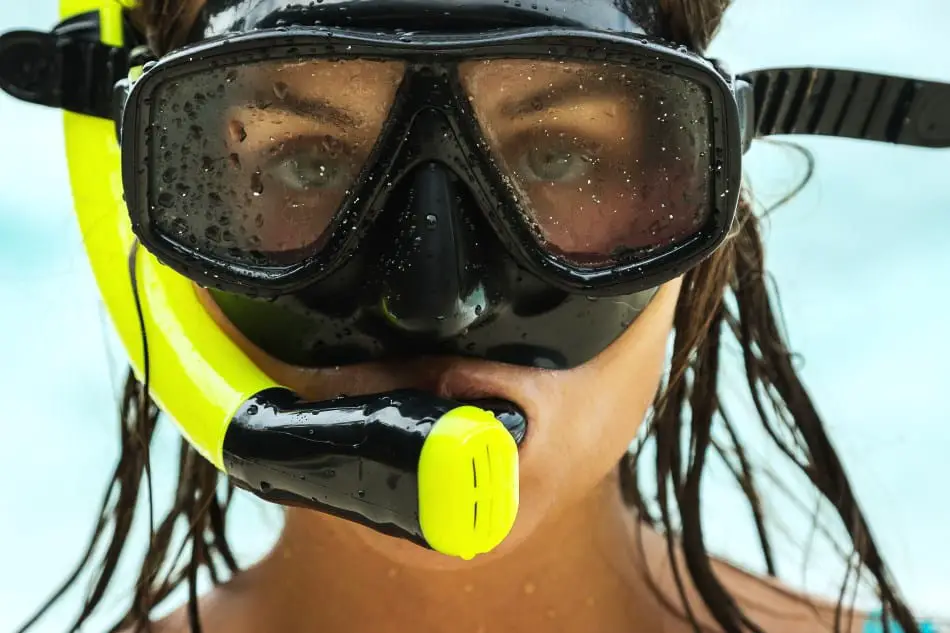
Final Thoughts
While you can’t dive too deep down with snorkeling gear, you can shallow dive and do some underwater snorkeling. There are just some key factors to keep in mind such as having clean, proper snorkel gear, the ability to control your breath underwater, being fit enough to navigate under the surface, and to resurface before you run out of oxygen.
It is also advisable to always have a snorkel buddy with you who can assist you in case of emergencies and also help you practice holding your breath underwater for a longer amount of time.
With the right technique and practice, you can dive down a few meters with your snorkel gear! Just don’t get overconfident and listen to your body when it starts showing signs of dizziness, nausea or any other pain.
Quick Tip: Always pop your ears before and after your dive to avoid clogging them, or worse, running the risk of getting swimmer’s ear!
The most important thing is to snorkel dive confidently and carefully. Once you’re in the water, explore this other world, the life of the sea creatures, and other fascinating things you may find under the surface.
